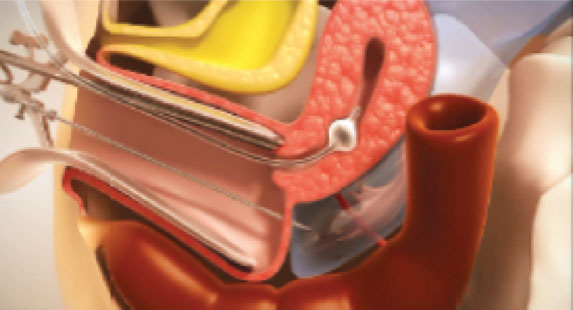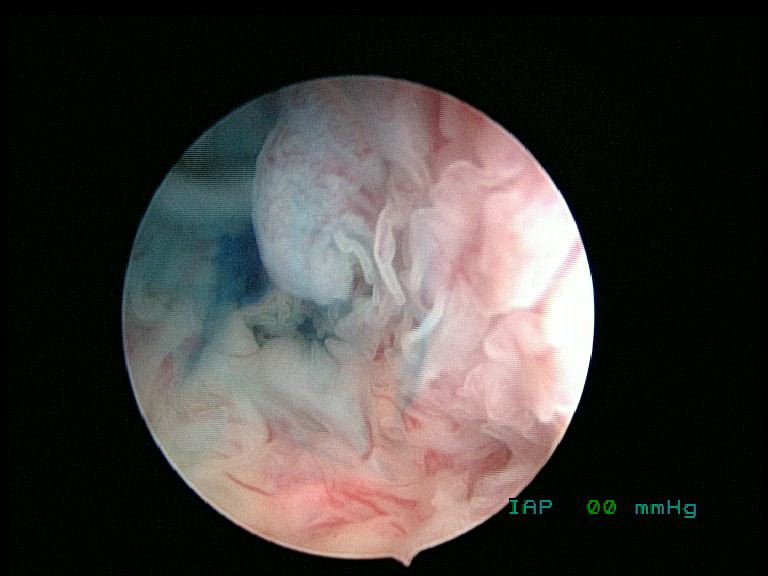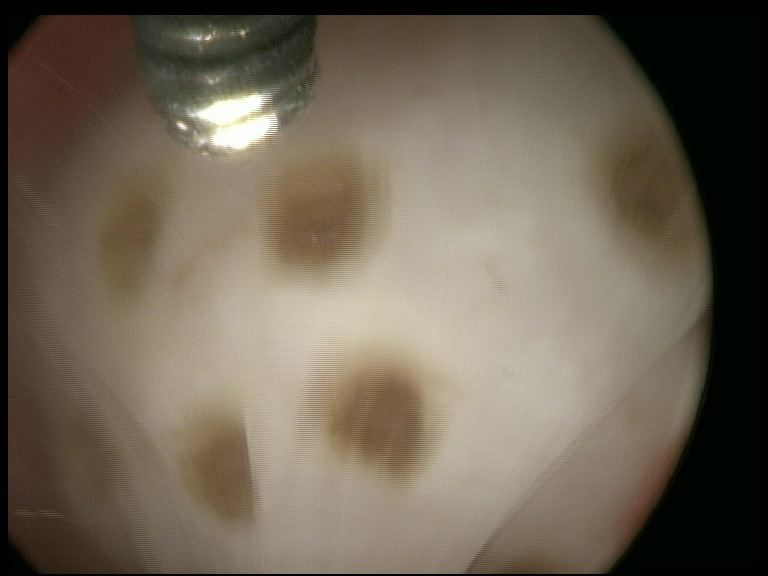Fertiloscopy
What is a Fertiloscopy?
Fertiloscopy is the name given to a minimally-invasive technique for investigating female infertility. A/Prof Reyftmann is one of the only specialists offering this technique in Australia. It may be performed as an alternative to, diagnostic laparoscopy. A laparoscopy (sometimes known as keyhole surgery) is an operation in which an instrument is introduced in your abdomen through the belly button to diagnose and treat a range of conditions, including endometriosis.
This link will lead you to a surgical video.
Procedure
Fertiloscopy will usually combine the following diagnostic procedures : hydrolaparoscopy, dye test, salpingoscopy, microsalpingoscopy (all via the above approach) and hysteroscopy (using the same endoscope). Operative fertiloscopy can be extended to include a therapeutic procedure (ovarian drilling) in case of polycystic ovarian syndrome (PCOS).
 General profile view of the Fertiloscopy
General profile view of the Fertiloscopy
Before your procedure
Because you are having a general anaesthetic, you must not eat or drink for six hours before admission. Please do not smoke for at least 24 hours before your admission. If you are on any medications, especially blood pressure tablets, please take these with a sip of water as usual. If you are unsure, please ask when confirming your booking. Any other queries about the anaesthetic can be answered then as well. If we are unable to answer your questions we will find out for you from your anaesthetist.
How is a Fertiloscopy done?
A general anaesthetic will be injected into a vein in your hand or arm. In very selected cases, if A/ Prof. Reyftmann thinks that it appropriate, the procedure can be carried on with a local anaesthetic of the vagina, and a mild intravenous sedation. This approach allows the patient to participate to the procedure and visualize the tubes and the uterus herself, and to have a faster recovery. Not everyone is suitable for this type of approach, and it will be discussed with you at the time of the initial consultation.
Fertiloscopy uses a minimally-invasive trans-vaginal approach to the pelvic organs. Firstly, a small puncture of the posterior vaginal fornix allows the instillation of saline solution into the pelvic cavity. A telescope is then introduced into the cavity via the same route. The presence of the instilled fluid allows a detailed, "underwater" examination of the pelvic organs (hydrolaparoscopy).
Then Doctor Reyftmann will perform a hysteroscopy (where a telescope-like instrument is inserted into the uterus through the vagina), which will enable to examine the inside of your uterus. Finally, there will be the injection of a blue dye through the uterus and tubes to check for blockages.

When the operation has been completed the Fertiloscope will be removed and the fluid allowed to escape. The small cut in the vagina does not require stitches. You must avoid sexual intercourse, the use of tampons and swimming for 2 weeks, time for the vaginal incision to heal.
Pain management
To help minimise the pain after your operation, once you are under the anaesthetic you will be given pain medication. This should help make your immediate recovery period more comfortable. If not, stronger pain relief will be given. After surgery you will be taken to the recovery area.
You will usually spend one or two hours in this area, however recovery time depends on the extent of your surgery and your response to the anaesthetic. Whilst in recovery you will be monitored frequently. Your blood pressure, pulse and oxygen saturation will be taken and your vaginal discharge will be observed. An intravenous line enables the recovery nurses to administer painkillers and / or anti-nausea drugs to maintain your comfort.
Fertiloscopy and Early Pregnancy
A sample of the lining of the uterus (a curette) can be taken for diagnosis. This and other hysteroscopic procedures could disrupt a very early pregnancy. Often Fertiloscopy will be timed just after a period to avoid the chance of an early pregnancy being disturbed; otherwise it is advised that you use abstinence or physical contraceptives such as condoms during the month the procedure is scheduled.
Possible complications
Fertiloscopy is routine and safe in most cases. It takes about 15 minutes. However, as with all operations, complications can occur.
These complications include bleeding, infection, injury to abdominal organs and anaesthetic complications. The chance of a complication such as an injury to the rectum will be higher if you suffer from endometriosis or have had a pelvic infection in the past. In case of rectal injury your stay will be extended overnight and you will receive antibiotics. Although such complications are rare, they can be serious. Occasionally it is necessary for a formal operation (a laparoscopy or a laparotomy) to be carried out to deal with them. Figtree Private and Shellharbour Private where A/Prof. Reyftmann operates are fully equipped for laparotomies, bowel surgery and vascular surgery.
The preoperative questions, the clinical assessment and the pelvic ultrasound will help A/Prof. Reyftmann to assess if there is a significant risk of obliteration of the Pouch of Douglas (the tiny space at the back of the uterus where the Fertiloscope will be inserted). If it was the case, he would recommend a classic laparoscopy rather than a laparoscopy.
The Fertiloscopy can be carried out in 90% of cases and replace the laparoscopy. However, in 10% of cases, the access through the vagina is impossible, and this is only discovered while you are asleep. In that particular case, a classic laparoscopy can be performed immediately as a back up solution if you have had the proper information and have given your consent.
Should a complication occur at the time of the operation, it is usually recognised and treated immediately. However, if you experience any post-operative reactions beyond those described in the next paragraph you should phone A/Prof. Reyftmann's rooms and / or seek further medical advice.
After the Fertiloscopy
 Ovarian drilling for PCOS
Ovarian drilling for PCOS
Abdominal Pain
You will usually experience abdominal pain or period-like pain for a few days after the operation.
Lie down and rest as much as possible
Panadol or Panadeine is usually sufficient for pain relief.
Bleeding
Vaginal bleeding is normal after a Fertiloscopy. This bleeding should be no more than the flow of a normal period and may last for a week or more. If a hysteroscopy has been performed, blood stained fluid may drain from the vagina. If dye studies for infertility have been performed, there may be some blue vaginal discharge. To avoid infection, do not use tampons or have intercourse until the bleeding has ceased.
Important information
Returning to your usual routine takes less time than in case of classic surgery. You should arrange 2 days off work altogether. A certificate can be arranged. Because you have had a general anaesthetic it is important that you make sure there is someone to bring you home, and you should not drive a car, make any important decisions, use dangerous equipment or tools, sign any legal documents or drink alcohol for at least 24 hours.
This link will lead you to a surgical video featuring Fertiloscopy.


